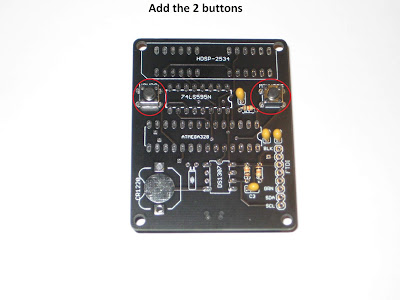What makes a good beginner electronics kit?
- easy through-hole soldering
- includes a variety of components
- reasonably priced (this is relative; what may be expensive for me may be cheap for you)
- standalone and all-inclusive: does not require extra parts/components/modules sourced from third parties and does not require loading software;
- interesting (as opposed to boring) functionality: flashes LEDs, displays something on a screen, makes some sounds etc.
- relative simplicity of the circuit, so it can be easy to understand and debug if necessary
- aesthetics of the board (shape, colour, component placement etc.)
- preferably open source
- powered by low voltage (battery, USB, power adapter)
- digital electronics rather than analog (easier to debug, if necessary)
- practical utility: use it for a utilitarian purpose rather than forget about it once built
- expandability: can be either integrated as part of a bigger project, or its capabilities and functionality can be extended by adding modules or parts
- provides extra learning (besides soldering) by displaying information: wave forms, frequencies, binary/hex number representation, musical notes, proverbs etc.
- satisfaction guaranteed once assembled and working :)
1. Elenco AM Radio kit
2. Chinese Radio kits: A, B
3. 6-digit LED Clock kit
4. 4-digit LED Alarm Clock kit
5. 4-digit LED Talking Clock kit
6. Elenco two-tone European Siren kit
7. Retro Classic Game (Tetris, Snake etc.) kit
8. 3D Christmas Tree Flashing LEDs kit
9. Electronic Piano kit
10. Electronic 16 Sound Music Box kit
11. Astable Multi-vibrator Circuit Learn kit
12. Mini Speaker Box Amplifier kit
13. Aviation Band Radio Receiver kit
14. Calculator and Counter with LCD and Keyboard kit
15. "Three Fives" Discreet 555 Timer kit
16. TV-B-Gone kit
17. MintyBoost kit
18. MintySynth kit (now discontinued)
19. Drawdio kit
20. Electronic Hourglass LED kit
21. Round LED Clock kit
22. Signal Generator with XR2206 Adjustable Frequency kit
23. Solder:Time Desk Clock kit
24. Geiger Counter kit(s)
25. Wristwatch LED kit
26. Burglar Electronic Alarm kit
27. Conway's Game of Life kit
28. Music Synthesizer kit
29. Line Following Robot kit
30. Jameco Atari Punk Console kit
31. 555 Forrest Mims Project kit(s)
32. Tesla Coil kit
33. Velleman voice changer kit
34. Various badges (Maker, Day of Geek, Unicorn, and many many others)















































